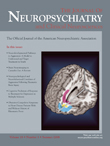Neuroacanthocytosis: Presenting With Depression
“Mr. A,” a 38-year-old divorcee, presented to the department of neurology with complaints of alteration of the gait for the past 14 years. Since the age of 24, he had walked with a peculiar gait characterized by exaggerated lurching interspersed with sudden flexion movements at the hip and the knee joints bilaterally. He also had three episodes of generalized tonic clonic seizures when he was 26 years old; since then, he has been stabilized on 300 mg of phenytoin. For the past 3 years he has experienced difficulty with his speech and has found it difficult to articulate words. He also has experienced difficulty degluting solids. Following the onset of the illness, Mr. A lost his job, wife, and 6-year-old daughter. For the 8 months prior to presentation, Mr. A reported sadness and a loss of interest in those TV programs he usually watched. His interaction with his family members also diminshed and now he preferred to spend most of his time alone in his room. At times he experienced thoughts of helplessness and hopelessness. He found no purpose left in his life and thought of ending it. Neurological examination revealed dysarthric speech and chorieform movement of the bilateral upper limbs. There was no evidence of any sensory deficit. His magnetic resonance imaging (MRI) scans did not reveal any significant findings and his routine investigations, apart from the peripheral blood film (PBF), were within normal range. PBF showed accanthocytes that constitute 10% of the peripheral blood film. A detailed psychiatric evaluation produced evidence in favor of major depressive disorder following which he was put on a regimen of sertraline, 200 mg.
Neuroacanthocytosis is a progressive neurological disease first described by Levine in 1960 and characterized by movement disorders, personality changes, cognitive deterioration, axonal neuropathy, and seizures. Acanthocytes (>3%) are seen in peripheral blood smears. Neurochemical studies have revealed altered levels of catecholamines in various brain regions. Dopamine has been found to be decreased in almost the entire brain, and norepinephrine levels elevated in the putamen and globus pallidus. Studies have also reported decreased serotonin levels in the caudate nucleus and substantia nigra. The mean age of presentation ranges from 8 to 62 years with a possible male preponderance. Sporadic cases, as well as autosomal recessive, autosomal dominant, and X-linked inheritance patterns, have been reported. This disorder is linked to chromosome 9q21. Imaging studies have revealed caudate atrophy and increased signal in caudate and lentiform nuclei and hypometabolism in the neostriatum and the frontal cerebral cortical areas. The psychiatric manifestations of the disorder reported include personality changes, impulsivity, distractibility, anxiety, depression, apathy, loss of introspection, and compulsivity. 1 , 2 The treatment basically aims at supportive therapy and the management of associated behavioral symptoms.
1. Rafalowska J, Drac H, Jamrozik Z: Neuroacanthocytosis: review of literature and case report. Folia Neuropathol 1996; 34:178–183Google Scholar
2. Rinne JO, Daniel SE, Scaravilli F: The neuropathological features of Neuroacanthocytosis. Mov Disord 1994; 9: 297–304Google Scholar



